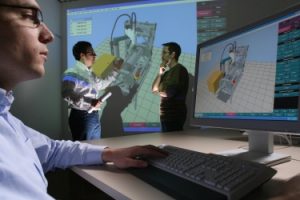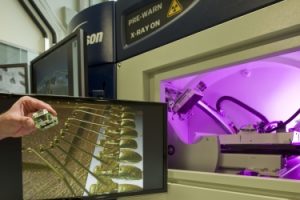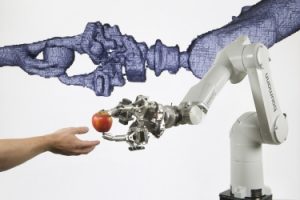AI environment segmentation of walkable surfaces for navigation of visually impaired persons
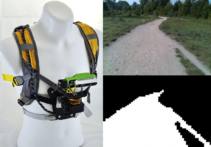
Motivation
In 2020, 43.2 million people worldwide were affected by blindness and 295.3 million people suffered from mild to severe visual impairments. Impairments in visual perception present those affected with a wide range of challenges in everyday life, often resulting in limited participation in everyday life and a reduced quality of life.
The research project LOMOBI aims to develop an interactive assistance system for the navigation of visually impaired people in everyday life. Compared to the previously developed demonstrator, this includes both outdoor and indoor areas (see picture).
Objective
The aim of this work is the evaluation and implementation of a neural network for the environment segmentation of walkable, less walkable and non-walkable surfaces in order to enable the navigation algorithm to plan a corresponding path. In order to distinguish between these surfaces, it is necessary to record and classify corresponding training data and to train an appropriate neural network for segmentation. Furthermore, the trained network should be integrated into ROS2 and run on a mobile computing unit (Jetson Xavier NX).
Notes / Requirements
Basic knowledge of programming, deep learning and image processing should be available. The software module is to be implemented in ROS2, so prior knowledge of C++ or Python and ROS is advantageous, but not necessarily required. The scope and objectives can be adapted according to the previous knowledge.
Further information is available on request by email.
Localization of the ultrasound probe in ultrasound elastography using 3D cameras
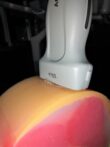
In Germany, more than 60,000 amputations are performed each year. The lower extremities are frequently affected, resulting in a severe restriction of mobility and making patients dependent on technical aids such as prostheses for more flexibility in everyday life. According to current standards, prosthesis fitting is performed manually via palpation (palpation) and a plaster cast of the residual limb, followed by manual fabrication of the socket, which serves as a connection to the body. Due to the highly subjective assessment, the fitting is solely dependent on the competence of the prosthetist.
In a current research project, a newly developed haptic scanning system is to be used to quantify and digitally record manual palpation by the prosthetist. For this purpose, sensor data from an ultrasound-based measurement process will be fused with precise localization data. The data acquisition will be explored using ultrasound elastography and the haptic tissue data will be measured.
In this work, the localization of the ultrasound probe will be elaborated and tested when using ultrasound elastography. This would allow accurate position determination and 3D reconstruction, thus facilitating further data processing.
Contents:
- Independent familiarization and literature research (ultrasound elastography, 3D cameras, software interface).
- Investigation of algorithms for spatial localization of objects using 3D cameras
- Design and implementation of algorithms for the localization of the ultrasound probe
- Design and implementation of tests to verify the accuracy of ultrasound probe localization
Prior Knowledge:
- Basic interest in medical topics
- Basic programming skills and interest in programming (especially Python and C++)
- Responsible handling of the ultrasound system and the cameras
- Clearly structured and independent way of working
Please apply via email with your current grade summary and your CV.
Start:
from now on
Implementation of an Open Streetmap application to support and navigate impaired people
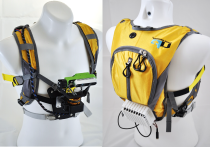
Motivation
In 2020, 43.2 million people worldwide were affected by blindness and 295.3 million people suffered from mild to severe visual impairments. Impairments in visual perception present those affected with a wide range of challenges in everyday life, often resulting in limited participation in everyday life and a reduced quality of life.
The research project LOMOBI aims to develop an interactive assistance system for the navigation of visually impaired people in everyday life. Technologies from the fields of computer vision and mobile robotics are being adapted and further developed. The backpack developed in previous research projects to assist joggers (see picture) serves as a guide. Navigation signals for the person can be derived and transmitted by means of an environment detection system and a vibrotactile and auditory interface (vibration motors / bone headphones).
Maps available online, such as from OpenStreetMap, provide a wealth of information that can be used to navigate and/or assist those affected. The long-term goal is to enable visually impaired people to navigate in unfamiliar environments through external map material. This information can be used not only for navigation of visually impaired people but also for intelligent wheelchairs.
Objective
In a first step, the aim of this work is to evaluate relevant and available data for navigation and for the support of impaired persons. Based on this, a software module for the Robot Operating System (ROS) will be implemented that provides the relevant information. Depending on the previous knowledge, the aim is also to extend the navigation on the basis of this data and to improve the localisation.
Notes / Requirements
Basic programming knowledge should be available. The software module is to be implemented in ROS, so prior knowledge of C++ or Python and ROS is advantageous, but not necessarily required. The scope and objectives can be adapted according to the previous knowledge.
Further information is available on request by email.
Environment classification for the selective application of different navigation algorithms for the navigation of visually impaired persons

Motivation
In 2020, 43.2 million people worldwide were affected by blindness and 295.3 million people suffered from mild to severe visual impairments. Impairments in visual perception present those affected with a wide range of challenges in everyday life, often resulting in limited participation in everyday life and a reduced quality of life.
The research project LOMOBI aims to develop an interactive assistance system for the navigation of visually impaired people in everyday life. Compared to the demonstrator developed so far, this includes both outdoor and indoor areas (see picture). Different navigation algorithms are available in the areas. Therefore, the developed assistance system must be able to distinguish between the different areas.
Aim of the work
The aim of this thesis is the evaluation and implementation of an environment classifier. Within the scope of this work, the possible environments and corresponding use of sensor data for the assistance system are to be derived. In order to distinguish between these regions, a corresponding classifier has to be developed. This must be integrable into the ROS navigation architecture.
Previous knowledge / Notes
Basic programming knowledge and interest in programming should be available. The final navigation architecture is to be embedded in ROS, so prior knowledge of C++ or Python as well as ROS is advantageous, but not necessarily required.
Contact
Further information is available on request by email.
Development and implementation of a socially accepted path planner for the navigation of impaired persons
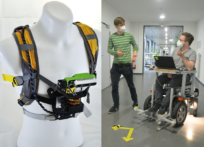
Motivation
The navigation of people in everyday situations is a challenging problem. In particular, busy environments with many other people present navigation systems with challenges in terms of localisation and path planning.
If an assistance system takes over the navigation for a person, the adherence to social norms is crucial for the person concerned in terms of how they are perceived by other people (for example, the proximity to strangers). Therefore, socially accepted navigation is of particular importance at this point.
In the LOMOBI research project, an interactive assistance system for the navigation of visually impaired persons is being developed to support orientation and mobility in large parts of everyday life. Furthermore, socially accepted navigation is also of great importance for the development of intelligent wheelchairs, other assistance systems or mobile robots.
Objective
The aim of this thesis is to familiarise the reader with the current state of the art on the topic of social navigation. Based on the results, a first path planner will be developed that takes social norms into account. The Robot Operating System (ROS) is used for implementation. This provides a variety of algorithms and technologies of mobile robotics that can be used.
Notes / requirements
Basic knowledge or the motivation to familiarise oneself with the programming of robotic systems should be available. The software module is to be implemented in ROS, so prior knowledge of C++ or Python and ROS is advantageous, but not necessarily required. The scope and objectives are adaptable according to prior knowledge.
The FAPS offers a wide range of opportunities to try out medical technology and robotics. Students get the opportunity to work with a wide variety of hardware. The working method is flexible and a student environment is provided.
If you have any further questions, please contact us by email or in person.
Indoor and outdoor navigation of visually impaired people

Motivation
In 2020, 43.2 million people worldwide were affected by blindness and 295.3 million people suffered from mild to severe visual impairments. Impairments in visual perception present those affected with a wide range of challenges in everyday life, often resulting in limited participation in everyday life and a reduced quality of life.
The research project LOMOBI aims to develop an interactive assistance system for the navigation of visually impaired people in everyday life. Technologies from the fields of computer vision and mobile robotics are being adapted and further developed. The backpack developed in previous research projects to assist joggers (see picture) serves as a guide. Navigation signals for the person can be derived and transmitted by means of an environment detection system and a vibrotactile and auditory interface (vibration motors / bone headphones).
Aim of the work
The aim of this work is the evaluation and development of an indoor and outdoor navigation architecture for the existing assistance system. The system developed within the framework of the LOMOBI research project should be able to be used for both indoor and outdoor navigation. Different navigation information is available in these areas. In this work, algorithms for indoor and outdoor navigation for the assistance system are to be evaluated and implemented.
Previous knowledge / Notes
Basic programming knowledge should be available. The navigation architecture is to be implemented in ROS, so prior knowledge of C++ or Python and ROS is advantageous, but not necessarily required.
Contact
For further information, please send an email.


